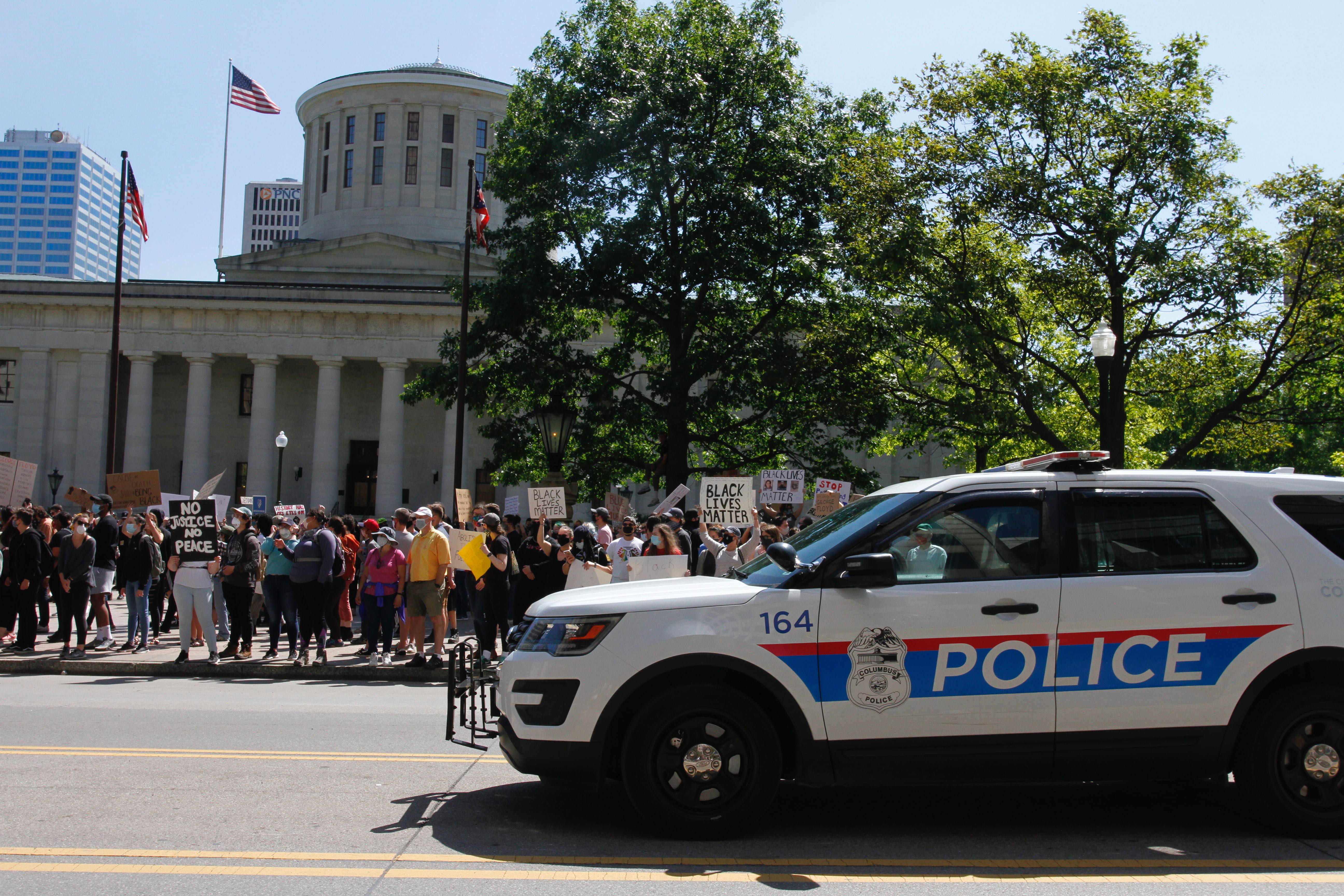
After an eight-month research study, an Ohio State University John Glenn College of Public Affairs action review conducted by Trevor Brown, dean of the John Glenn College of Public Affairs, found that the city of Columbus was unprepared for summer 2020 Black Lives Matter protests and there was inconsistent communication within the Columbus Police. Credit: Sarah Szilagy | Campus Editor
Columbus residents viewed policing as a national issue when they took to the streets to protest following the murder of George Floyd in Minneapolis police custody in May 2020. An Ohio State research study published Monday found this was a surprise to the Columbus Police, which thought it had a good relationship with the community.
After an eight-month research study, an Ohio State University John Glenn College of Public Affairs action review conducted by Trevor Brown, dean of the John Glenn College of Public Affairs, found that the city of Columbus was unprepared for summer 2020 Black Lives Matter protests and there was inconsistent communication within the Columbus Police.
The review recommended that city leaders and police take active steps toward reconciliation with community members who are “disaffected” after the interviews revealed a large rift between Columbus Police and the community, particularly communities of color, according to the review.
“We believe that it is critically important that the city of Columbus and the Columbus Police Department address underlying community distrust,” Frank Straub, director of the Center for Mass Violence Response Studies at the Police Foundation, said at a Monday press conference.
Brown, the principal investigator, said the city asked the team to perform three tasks regarding the protests and the city’s response: document as many events as possible from about May 27 through July 19, 2020; evaluate how well the city prepared for the protests and implemented its response; and make research-informed recommendations of how the city could handle similar events differently in the future.
“A pillar of our research approach was to take steps to protect the confidentiality of the participants,” Brown said at a Monday press conference. “Our task was not to examine individual actions but rather to assess how the city at large, inclusive of the Columbus Police Department and elective leadership, prepared for and responded to the protests.”
The city of Columbus was unprepared for the size and energy of the protests, according to the review. The city also did not adhere to the national standard for emergencies set forth in the National Incident Management System protocol — including establishing command centers for emergency response coordination and news media.
“There was a false sense of ‘This couldn’t happen here, not in Columbus.’ The police view was that what happened to George Floyd happened hundreds of miles away and we didn’t have anything to do with it. Police felt that their relationship with the community was good,” Carter Stewart, former U.S. attorney for the Southern District, managing director of the Draper Richards Kaplan Foundation and lead investigator of the review, said at a Monday press conference.
Other findings showed there was inconsistent communication — particularly in the first few days of the protests — among the Columbus Police chief, executive staff, field commanders and line officers, according to the review.
According to the review, the officers’ morale was low and most officers said they felt abandoned by city leadership who seemed “paralyzed” and reduced their ability to deploy tactics they were trained to use — such as using chemical agents to disperse crowds. Officers said they often received conflicting orders about crowd management and appropriate levels of force and elected officials removed key tools for crowd control without consulting them.
At several summer demonstrations, officers deployed rubber and wooden bullets, tear gas and pepper spray at demonstrators, including the June 1 pepper-spraying of Lantern staff. According to the review, Columbus Police used 1,370 rounds of munitions — although the type of ammunition was not specified.
The review recommended police to address any “rifts” between command staff and rank and file personnel.
The review also recommended Columbus Police provide its policies and trainings to mutual aid agencies, clearly define when the use of chemical agents is appropriate and plan for similar events with community input to align responses — particularly regarding whether the protest should require a permit and whether protesters will be allowed in the street.
Other recommendations for the city of Columbus to better support the police department include training officers to manage mass demonstrations, reviewing national and international best practices for policing First Amendment assemblies, developing new practices using community input and following National Incident Management System protocols.


